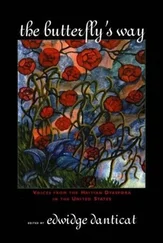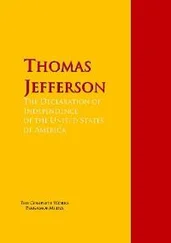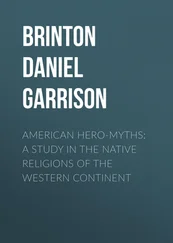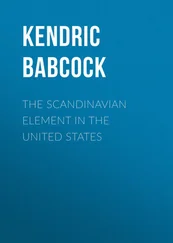Hubert Bancroft - The Native Races [of the Pacific states], Volume 1, Wild Tribes
Здесь есть возможность читать онлайн «Hubert Bancroft - The Native Races [of the Pacific states], Volume 1, Wild Tribes» — ознакомительный отрывок электронной книги совершенно бесплатно, а после прочтения отрывка купить полную версию. В некоторых случаях можно слушать аудио, скачать через торрент в формате fb2 и присутствует краткое содержание. ISBN: , Жанр: foreign_antique, foreign_prose, на английском языке. Описание произведения, (предисловие) а так же отзывы посетителей доступны на портале библиотеки ЛибКат.
- Название:The Native Races [of the Pacific states], Volume 1, Wild Tribes
- Автор:
- Жанр:
- Год:неизвестен
- ISBN:http://www.gutenberg.org/ebooks/41070
- Рейтинг книги:5 / 5. Голосов: 1
-
Избранное:Добавить в избранное
- Отзывы:
-
Ваша оценка:
- 100
- 1
- 2
- 3
- 4
- 5
The Native Races [of the Pacific states], Volume 1, Wild Tribes: краткое содержание, описание и аннотация
Предлагаем к чтению аннотацию, описание, краткое содержание или предисловие (зависит от того, что написал сам автор книги «The Native Races [of the Pacific states], Volume 1, Wild Tribes»). Если вы не нашли необходимую информацию о книге — напишите в комментариях, мы постараемся отыскать её.
The Native Races [of the Pacific states], Volume 1, Wild Tribes — читать онлайн ознакомительный отрывок
Ниже представлен текст книги, разбитый по страницам. Система сохранения места последней прочитанной страницы, позволяет с удобством читать онлайн бесплатно книгу «The Native Races [of the Pacific states], Volume 1, Wild Tribes», без необходимости каждый раз заново искать на чём Вы остановились. Поставьте закладку, и сможете в любой момент перейти на страницу, на которой закончили чтение.
Интервал:
Закладка:
It was obvious to the Europeans when they first beheld the natives of America, that these were unlike the intellectual white-skinned race of Europe, the barbarous blacks of Africa, or any nation or people which they had hitherto encountered, yet were strikingly like each other. Into whatsoever part of the newly discovered lands they penetrated, they found a people seemingly one in color, physiognomy, customs, and in mental and social traits. Their vestiges of antiquity and their languages presented a coincidence which was generally observed by early travelers. Hence physical and psychological comparisons are advanced to prove ethnological resemblances among all the peoples of America, and that they meanwhile possess common peculiarities totally distinct from the nations of the old world. Morton and his confrères, the originators of the American homogeneity theory, even go so far as to claim for the American man an origin as indigenous as that of the fauna and flora. They classify all the tribes of America, excepting only the Eskimos who wandered over from Asia, as the American race, and divide it into the American family and the Toltecan family. Blumenbach classifies the Americans as a distinct species. The American Mongolidæ of Dr Latham are divided into Eskimos and American Indians. Dr Morton perceives the same characteristic lineaments in the face of the Fuegian and the Mexican, and in tribes inhabiting the Rocky Mountains, the Mississippi Valley, and Florida. The same osteological structure, swarthy color, straight hair, meagre beard, obliquely cornered eyes, prominent cheek bones, and thick lips are common to them all. Dr Latham describes his American Mongolidæ as exercising upon the world a material rather than a moral influence; giving them meanwhile a color, neither a true white nor a jet black; hair straight and black, rarely light, sometimes curly; eyes sometimes oblique; a broad, flat face and a retreating forehead. Dr Prichard considers the American race, psychologically, as neither superior nor inferior to other primitive races of the world. Bory de St Vincent classifies Americans into five species, including the Eskimos. The Mexicans he considers as cognate with the Malays. Humboldt characterizes the nations of America as one race, by their straight glossy hair, thin beard, swarthy complexion, and cranial formation. Schoolcraft makes four groups; the first extending across the northern end of the continent; the second, tribes living east of the Mississippi; the third, those between the Mississippi and the Rocky Mountains; and the fourth, those west of the Rocky Mountains. All these he subdivides into thirty-seven families; but so far as those on the Pacific Coast are concerned, he might as reasonably have made of them twice or half the number.
All writers agree in giving to the nations of America a remote antiquity; all admit that there exists a greater uniformity between them than is to be found in the old world; many deny that all are one race. There is undoubtedly a prevailing uniformity in those physical characteristics which govern classification; but this uniformity goes as far to prove one universal race throughout the world, as it does to prove a race peculiar to America. Traditions, ruins, moral and physical peculiarities, all denote for Americans a remote antiquity. The action of a climate peculiar to America, and of natural surroundings common to all the people of the continent, could not fail to produce in time a similarity of physiological structure.
INDIVIDUALITY OF RACE.The impression of a New World individuality of race was no doubt strengthened in the eyes of the Conquerors, and in the mind of the train of writers that followed, by the fact, that the newly discovered tribes were more like each other than were any other peoples they had ever before seen; and at the same time very much unlike any nation whatever of the old world. And so any really existing physical distinctions among the American stocks came to be overlooked or undervalued. Darwin, on the authority of Elphinstone, observes that in India, "although a newly arrived European cannot at first distinguish the various native races, yet they soon appear to him entirely dissimilar; and the Hindoo cannot at first perceive any difference between the several European nations."
It has been observed by Prof. von Martius that the literary and architectural remains of the civilized tribes of America indicate a higher degree of intellectual elevation than is likely to be found in a nation emerging from barbarism. In their sacerdotal ordinances, privileged orders, regulated despotisms, codes of law, and forms of government are found clear indications of a relapse from civilization to barbarism. Chateaubriand, from the same premises, develops a directly opposite conclusion, and perceives in all this high antiquity and civilization only a praiseworthy evolution from primeval barbarism.
Thus arguments drawn from a comparison of parallel traits in the moral, social, or physical condition of man should be received with allowance, for man has much in common not only with man, but with animals. Variations in bodily structure and mental faculties are governed by general laws. The great variety of climate which characterizes America could not fail to produce various habits of life. The half-torpid Hyperborean, the fierce warrior-hunter of the vast interior forests, the sluggish, swarthy native of the tropics, and the intelligent Mexican of the table-land, slowly developing into civilization under the refining influences of arts and letters, – all these indicate variety in the unity of the American race; while the insulation of American nations, and the general characteristics incident to peculiar physical conditions could not fail to produce a unity in their variety.
RACES OF THE PACIFIC.The races of the Pacific States embrace all the varieties of species known as American under any of the classifications mentioned. Thus, in the five divisions of Blumenbach, the Eskimos of the north would come under the fourth division, which embraces Malays and Polynesians, and which is distinguished by a high square skull, low forehead, short broad nose, and projecting jaws. To his fifth class, the American, which he subdivides into the American family and the Toltecan family, he gives a small skull with a high apex, flat on the occiput, high cheek bones, receding forehead, aquiline nose, large mouth, and tumid lips. Morton, although he makes twenty-two divisions in all, classifies Americans in the same manner. The Polar family he characterises as brown in color, short in stature, of thick, clumsy proportions, with a short neck, large head, flat face, small nose, and eyes disposed to obliquity. He perceives an identity of race among all the other stocks from Mount St Elias to Patagonia; though he designates the semi-civilized tribes of Mexico and Peru as the Toltecan family, and the savage nations as the Appalachian branch of the American family. Dr Prichard makes three divisions of the tribes bordering the Pacific between Mount St Elias and Cape St Lucas: the tribes from the borders of the Eskimos southward to Vancouver Island constitute the first division; the tribes of Oregon and Washington, the second; and the tribes of Upper and Lower California, the third. Pickering assigns the limits of the American, Malay, or Toltecan family to California and western Mexico. He is of the opinion that they crossed from southeastern Asia by way of the islands of the Pacific, and landed upon this continent south of San Francisco, there being no traces of them north of this point; while the Mongolians found their way from northeastern Asia across Bering Strait. The Californians, therefore, he calls Malays; and the inhabitants of Vancouver Island, British Columbia, Washington, and Oregon, he classifies as Mongolians. Californians, in the eyes of this traveler, differ from their northern neighbors in complexion and physiognomy. The only physiological test that Mr Pickering was able to apply in order to distinguish the Polynesian in San Francisco from the native Californian, was that the hair of the former was wavy, while that of the latter was straight. Both have more hair than the Oregonian. The skin of the Malay of the Polynesian Islands, and that of the Californian are alike, soft and very dark. Three other analogous characteristics were discovered by Mr Pickering. Both have an open countenance, one wife, and no tomahawk! On the other hand, the Mongolian from Asia, and the Oregonian are of a lighter complexion, and exhibit the same general resemblances that are seen in the American and Asiatic Eskimos.
Читать дальшеИнтервал:
Закладка:
Похожие книги на «The Native Races [of the Pacific states], Volume 1, Wild Tribes»
Представляем Вашему вниманию похожие книги на «The Native Races [of the Pacific states], Volume 1, Wild Tribes» списком для выбора. Мы отобрали схожую по названию и смыслу литературу в надежде предоставить читателям больше вариантов отыскать новые, интересные, ещё непрочитанные произведения.
Обсуждение, отзывы о книге «The Native Races [of the Pacific states], Volume 1, Wild Tribes» и просто собственные мнения читателей. Оставьте ваши комментарии, напишите, что Вы думаете о произведении, его смысле или главных героях. Укажите что конкретно понравилось, а что нет, и почему Вы так считаете.
![Hubert Bancroft The Native Races [of the Pacific states], Volume 1, Wild Tribes обложка книги](/books/750126/hubert-bancroft-the-native-races-of-the-pacific-s-cover.webp)








![Hubert Bancroft - The Native Races [of the Pacific states], Volume 5, Primitive History](/books/749157/hubert-bancroft-the-native-races-of-the-pacific-s-thumb.webp)


